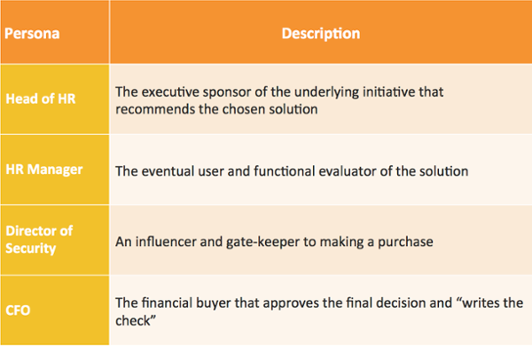 As millions of kids prepare to search high and low for Easter eggs this weekend, I’m reminded of a recent “the chicken or the egg” discussion I had around buyer personas and journey maps. In a world where driving leads and conversions depends on the ability of your content to inform, address, educate, and inspire your buyers, there’s no question that developing rich buyer personas and buyer journey maps are not just a nice-to-have – they’re a must-have. But the question is, which comes first? The personas or the journey map? The people or the process?
As millions of kids prepare to search high and low for Easter eggs this weekend, I’m reminded of a recent “the chicken or the egg” discussion I had around buyer personas and journey maps. In a world where driving leads and conversions depends on the ability of your content to inform, address, educate, and inspire your buyers, there’s no question that developing rich buyer personas and buyer journey maps are not just a nice-to-have – they’re a must-have. But the question is, which comes first? The personas or the journey map? The people or the process?
Buyer personas are representations of the actual buyers influencing or making decisions about your solutions and are based on real people, insights, and experiences. They include buyer goals, objectives, fears, buying preferences, buying criteria, concerns, and other awesome insights about who is buying your products (view a framework for building comprehensive personas).
A journey map is a framework that describes the steps (both thoughts and actions) that each buyer undergoes from initial consideration to purchase decision to becoming a customer. It consists of buyer needs, questions, preferences, and actions each step of the way. Personas and journey maps together give you a complete, in-depth understanding of your buyers and how they buy. These insights are rocket fuel for effective content marketing, and that’s why they’re the foundation of a successful content marketing strategy.
But which of these should you develop first? Some thought-leaders are firm in their stance that you need to understand how the buying process works first. Some adhere to the position that you should start with understanding the people you’re selling to. My opinion? It doesn’t matter. What matters is that you have both developed at a truly rich level – and regardless of where you start, it’s critical that the intersection of the personas and the journey captures the evolving roles of each persona each step of the way. For instance, capture the persona’s level of participation at each stage, as this may constantly change. This level of insight is what enables you to provide each buyer with highly targeted content at the precise moment it will have the most influence.
Here is a simple example. A technology company that sells human resources software would likely have a group of personas that include:

These personas go through a standard buyer’s journey, represented simply here in three stages: Discovering, Learning, and Choosing. Each of these stages represents a milestone in your buyer’s journey to purchasing your solution.

In the first stage, Discovery, the buyer must realize they have a pain point. The existing status quo needs to be loosened before moving forward to address this issue and commit to change. Next is the Learning stage, where the buyer explores various possible solutions and then commits to a solution set – but not the actual provider. Then in Choosing, the selected solution set needs to be justified. This is where it must be proven to key stakeholders that this investment is necessary, will yield significant business benefits, and will provide an ROI. After the solution set is justified, the buyer selects the specific solution provider.
Now that you have defined your personas and buying stages, you need to connect the two in a way that details the evolving roles within this group as they move along the journey. By talking to your customers and Sales through a set of interviews, you can determine the level of participation of each persona – Driver, Participant, Gate Keeper, or Not Involved – at each stage of the buying journey.

This will better inform your content marketing at each stage and make you more efficient. You don’t have to create content that is all things for all people in all stages. You can be specific and target impactful content to the people at the time it matters the most.
Understanding the participation of each persona at each stage is just the first step in developing a full journey map. The buyer’s journey is not one-dimensional – different buyer personas may engage in different activities and have different needs throughout their decision-making process. For the best results, you should evaluate this in detail for each of your buyer personas. This will guide you on how to impact their decision-making through valuable content.
So, back the original question: which comes first? Both are clearly essential. Buyer personas give you a deep understanding of your buyers so that you know what content will engage and motivate them. Journey maps make sure you get that content to the right person at the right time. The more you know about your buyer personas and journey, the more effectively you can engage with them throughout their purchasing process and influence the purchase decision.

